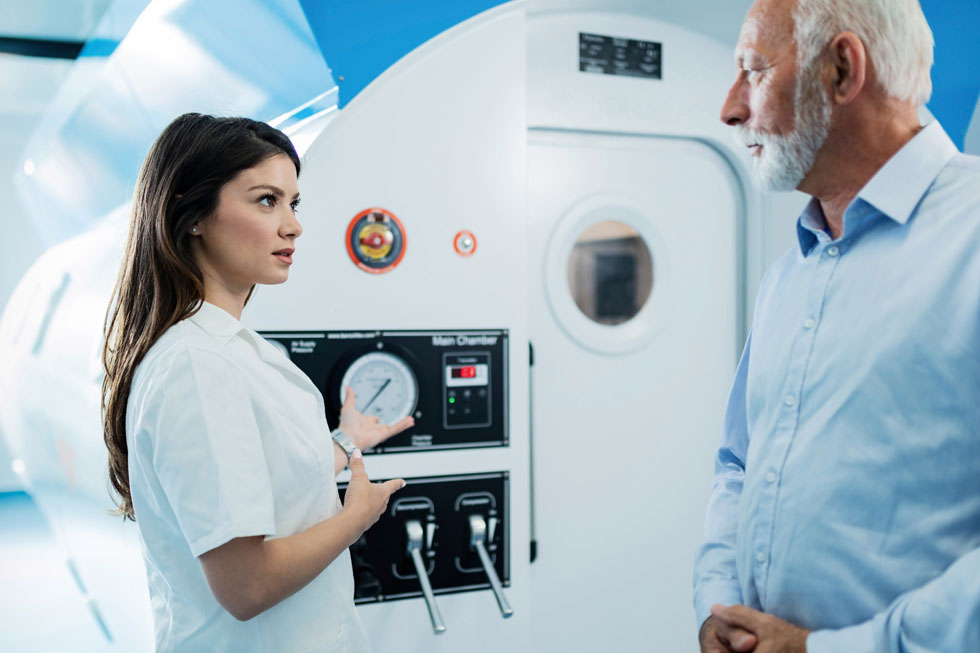Hyperbaric oxygen therapy (HBOT) is a medical treatment that involves breathing 100% pure oxygen in a pressurized room or chamber. During HBOT, your body is exposed to higher-than-normal atmospheric pressures, allowing more oxygen to enter your bloodstream and reach damaged organs or tissue. This exposure to increased levels of oxygen can help speed up the healing process and reduce inflammation. Let’s take a closer look at how it works.
How Hyperbaric Oxygen Therapy Works:
HBOT works by increasing the amount of oxygen in the bloodstream, which can be beneficial if you have certain medical conditions or injuries. During a session, you will sit in a pressurized chamber while wearing a mask that delivers 100% pure oxygen directly into your lungs. As the pressure increases within the chamber, more oxygen is forced into your bloodstream—increasing its concentration threefold—which can then be used by organs and tissues throughout your body.


The Benefits of Hyperbaric Oxygen Therapy:
The most common uses for hyperbaric oxygen therapy are for treating wounds that aren’t healing properly due to poor blood circulation or infections, as well as carbon monoxide poisoning and decompression sickness. Other potential benefits include reducing inflammation, improving cognitive function, and helping with recovery from traumatic brain injury (TBI). Additionally, hyperbaric chambers have been used by athletes to reduce muscle fatigue and improve athletic performance.
Side Effects of Hyperbaric Oxygen Therapy:
Like any medical treatment, there are some risks associated with HBOT. The most common side effects include ear pain during pressurization, shortness of breath due to rapid changes in air pressure, claustrophobia due to being enclosed in a tight space for long periods of time, and temporary vision changes caused by the increased pressure on the eyes. It’s important to discuss any possible risks with your doctor or physiotherapist before undergoing hyperbaric oxygen therapy.
Conclusion:
Hyperbaric Oxygen Therapy is an effective medical treatment that can help speed up healing times for those suffering from certain conditions or injuries. While it comes with some risks such as ear pain during pressurization and shortness of breath due to sudden changes in air pressure, these side effects are generally mild and temporary when treated under the supervision of an experienced physician or healthcare provider. If you think you may benefit from this type of therapy, speak with your doctor about whether it’s right for you!

